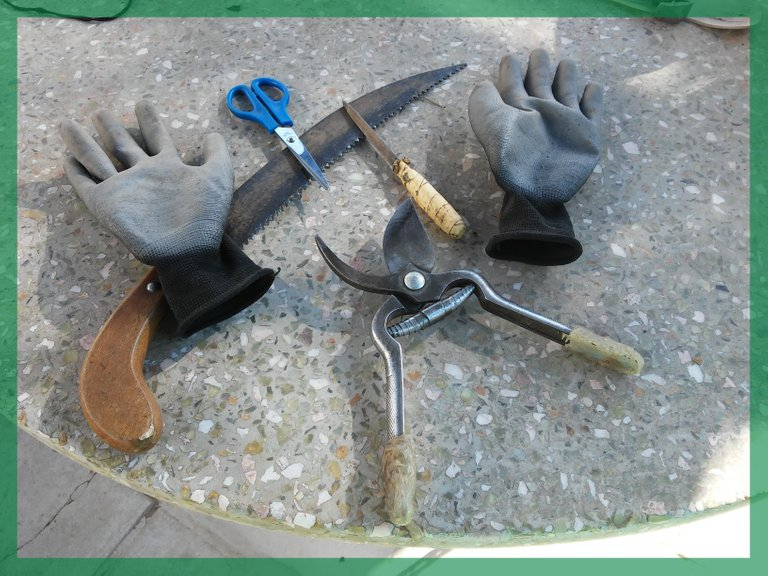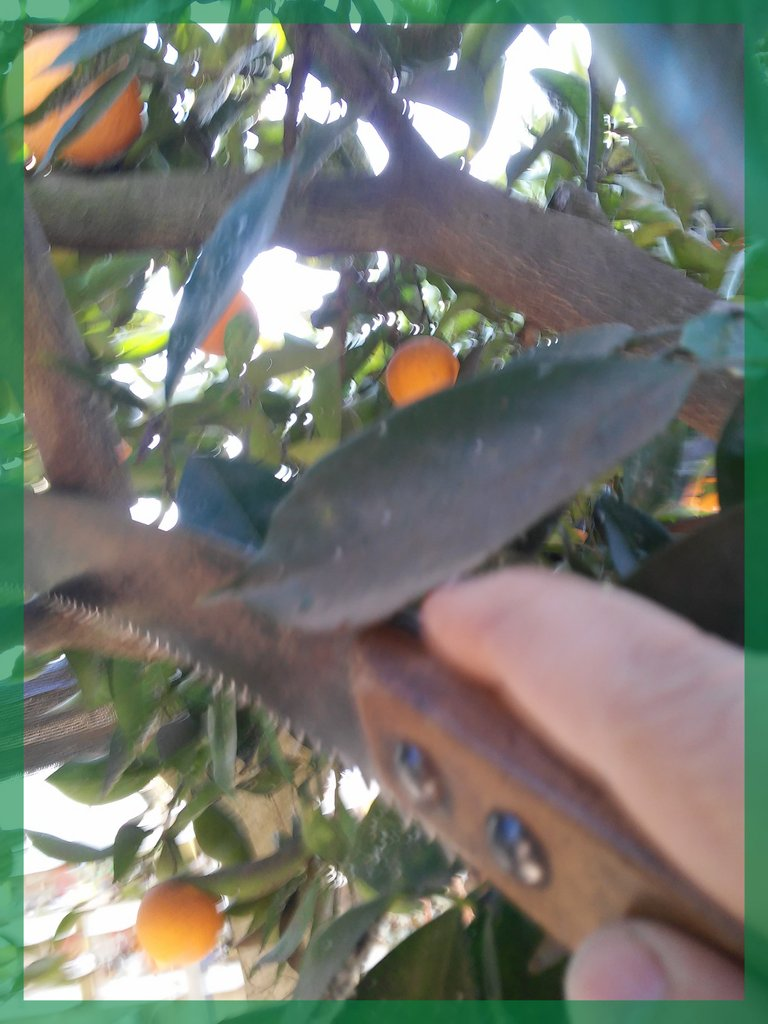
La propagación por esquejes es una de las agronómicas más antiguas practicadas por el hombre e incluso con algunos trucos y un equipo bastante sencillo se puede aprender esta técnica agrícola fundamental.
En esta guía veremos cómo preparar un esqueje de cítricos, específicamente un naranjo y, sobre todo, los consejos más útiles.

Propagation by cuttings is one of the oldest agronomics practiced by man and even with a few tricks and fairly simple equipment you can learn this fundamental agricultural technique.
In this guide we will see how to prepare a citrus cutting, specifically an orange tree and, above all, the most useful tips.
 )
)Primer paso. / First step.
El primer paso es construir un pequeño invernadero (que luego puede usar para muchas otras actividades tipo vivero) y asegurarse de sombrearlo (con mallas de sombreo compradas en tiendas agrícolas especializadas) para que los rayos del sol sean filtrado.
El invernadero puede ser de material ligero como cañas comunes o, si lo prefieres, más resistente y compuesto por cañas de bambú.
Para evitar corrientes de aire, el invernadero debe cubrirse con una película de polietileno, asegurándose de que sea accesible a través de una única abertura pero hermética.
Un invernadero de unos pocos metros cuadrados y lo suficientemente alto para poder acceder a él e inspeccionarlo es suficiente.

The first step is to build a small greenhouse (which you can later use for many other nursery-like activities) and make sure to shade it (with shading nets purchased from specialty agricultural stores) so that the sun's rays are filtered.
The greenhouse can be made of light material such as common reeds or, if you prefer, more resistant and composed of bamboo canes.
To avoid drafts, the greenhouse must be covered with a polyethylene film, ensuring that it is accessible through a single but airtight opening.
A greenhouse of a few square meters and high enough to be accessed and inspected is sufficient.
Preparación de los esquejes. / Preparation of the cuttings.
Una vez que tenga la estructura donde enraizar los esquejes, puede pasar a la preparación real de los esquejes.
Para preparar un esqueje es recomendable tomar una porción de la rama de 4-5 ojos (en una rama de 1-2 años, de unos 15 cm de largo), con dos o tres hojas y bastante rectas.
La base de esta rama debe sumergirse durante unos minutos en una mezcla de enraizamiento a base de hormonas.
En este punto pasamos a la segunda operación; la ramita (o ramitas) debe sumergirse en macetas de tamaño adecuado (incluso 10 x 10 x 10 cm) llenos de una mezcla de 70% de turba y 30% de arena (posiblemente silícea).
Como pauta, la mejor época para hacerlo es de mayo a agosto.
Una vez que las macetas o contenedores con los esquejes individuales se hayan preparado y colocado en el invernadero, se debe tener cuidado de mantener el suelo constantemente húmedo y la superficie de las hojas húmedas durante aproximadamente 20 a 30 días.
Once you have the structure where to root the cuttings, you can move on to the actual preparation of the cuttings.
To prepare a cutting, it is advisable to take a portion of the 4-5-eyed branch (on a 1-2 year-old branch, about 15 cm long), with two or three leaves and quite straight.
The base of this branch should be dipped for a few minutes in a hormone-based rooting mixture.
At this point we go to the second operation; the twig (or twigs) should be dipped in appropriately sized pots (even 10 x 10 x 10 cm) filled with a mixture of 70% peat and 30% sand (possibly siliceous).
As a guideline, the best time to do this is from May to August.
Once the pots or containers with the individual cuttings have been prepared and placed in the greenhouse, care must be taken to keep the soil constantly moist and the surface of the leaves moist for approximately 20 to 30 days.
Aparición de las raíces. / Appearance of the roots.
Durante este tiempo, sus esquejes inicialmente formarán un callo en la base y luego comenzarán a emitir raíces.
Una vez emitidas las raíces, las nuevas plantas serán independientes pero para el trasplante habrá que esperar al periodo otoñal (alrededor de noviembre) o al final del invierno tras las últimas heladas.
Con la propagación por esquejes obtendrás un ejemplar completamente idéntico a la planta madre pero, hay que decir que no es apto para todos los cítricos.
Algunos defectos de las plantas obtenidas por esquejes pueden ser los de tener un sistema radicular débil y por tanto generar plantas de menor duración.
During this time, your cuttings will initially form a callus at the base and then begin to root.
Once the roots are emitted, the new plants will be independent but for the transplant it will be necessary to wait for the autumn period (around November) or at the end of winter after the last frosts.
With the propagation by cuttings you will obtain a specimen completely identical to the mother plant but, it must be said that it is not suitable for all citrus fruits.
Some defects of the plants obtained by cuttings may be those of having a weak root system and therefore generating plants of shorter duration.
Un año más tarde. / A year later.
Los resultados después de un año con las raíces ya formadas.

The results after a year with the roots already formed.
Las imágenes son de mi propiedad / The images are my property